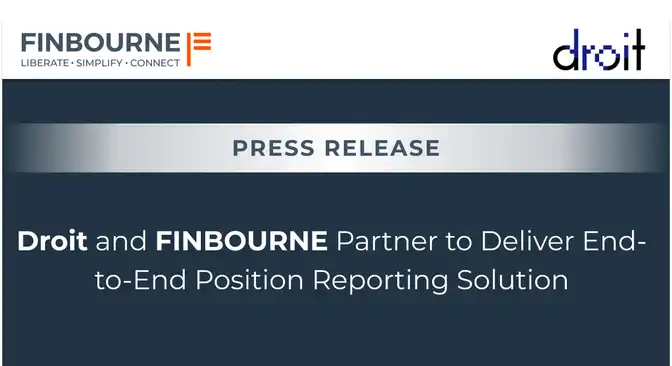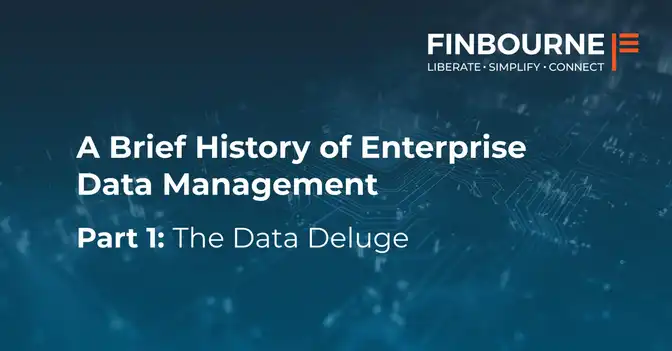The role of data within the investment ecosystem has never been more pertinent than it is now, particularly for buy-side managers.
Regulatory pressures paired with the explosion of information within the space has commodified data, or rather the interpretation of data, to the point of no return. The requirement for shrewd data management is now crucial for investment managers, and those that fail to adapt to the challenges associated risk being left behind.
Raw data can often be unruly and in need of refinement or decrypting, and beneath the term ‘data management’ is a range of customisable solutions geared toward effective data collection, integration and storage.
Given the myriad of approaches to data management, buy-side managers are unlikely to find a one-size-fits-all product from which to achieve operational efficiency. However, through a combination of different data management structures, a greater sense of harmony may be found.
Addressing your needs to build a data strategy
It’s worth considering the benefits, and indeed limitations, to each of the three technologies – data warehouses, data lakes and data virtualization – and how they may address complexities to enhance their data strategy.
Reporting is a key consideration for investment firms, with increasing scrutiny from regulators around data governance practises. Establishing with clear business data ownership, a full understanding of data lineage for Key Data Elements, and controls to manage, detect and improve data quality at source are now vital to achieving data resiliency. In addition, at a senior management level, there is typically the need for market intelligence dashboards to provide a real-time (or close to) understanding of the data landscape within their organisation, which is required to oversee data governance.
Integrating this governance across a multitude of legacy technologies is challenging and expensive, both from a financial and resource perspective. Once a firm begins to operate across multiple regulatory jurisdictions then this becomes even more unwieldy.
Data management solutions can be an ideal way to manage these problems, particularly when paired with visualization or reporting tools:
- Data virtualization can be used to connect to all a company’s underlying data systems and act as a single query location to source reports in real time. More advanced reports can also be empowered using AI and the machine learning capabilities common to these tools.
- Data lakes and data warehouses can also be highly beneficial by providing a single location of data to source all reports, particularly if high speeds are required, though they are limited by the requirement to replicate data, and thereby run the risk of sending stale reports.
Improved data governance requires real-time data access and the ability to control, link and understand data of increasing volumes and complexity. While data warehouse and lakes address these issues to an extent, the addition of a data virtualization tool removes the need for data replication, which in turn may reduce costs and improve efficiencies across the business.
Finding the best fit
Clearly, there is no one silver bullet for data management however, understanding which solution best fits a business and its requirements is key, particularly given the increasing complexity and volume of datasets that buy-side managers are now confronted with.
Data lakes are a recommended approach for scenarios where a business may require flexibility in the underlying data structure – for example, both structured and unstructured data in addition to a high level of flexibility but are not particularly concerned about the quality of the data and its staleness – data lakes may be the recommended approach.
However, if a business is seeking to optimise speed and is interested in performing time-based analysis but are less concerned about the recency of the data, and also the ease of onboarding new sources, then using a data warehouse may be more productive.
If a business requires real-time data access, flexibility to add and remove sources to meet changing requirements and are keen to remove data duplication but are comfortable dealing with a comparably slower data retrieval time over large data sets, then data virtualization is likely the best fit.
Introducing a financially literate and flexible data foundation will ultimately help managers to better understand the data they hold and help meet the increasing responsibilities around reporting requirements and by extension, client outcomes.
Discover more about data virtualization
Luminesce is FINBOURNE’s specialist data virtualization engine for financial services. Designed to simplify the connection to any source or shape of data in your organisation, it enables users to join data together in a single, virtual view in real-time without it being replicated, so you have full confidence about its fidelity. To arrange a demonstration, please get in touch below: Book a Luminesce demo (finbourne.com).





